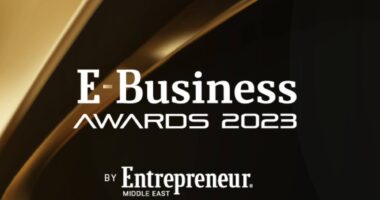
It’s been a year since ‘Disrupters’ hit the book shelves. Dr. Gabby Burlacu made an integral career change to take her disrupting to the next level.
July 19, 2019 6 min read
Opinions expressed by Entrepreneur contributors are their own.
As the only Millennial in profiled in the Disrupters series, Dr. Gabby Burlacu shows there is plenty to learn from the generation who will make up the vast majority of the workforce by 2020. Over the past year, Gabby has taken on a new challenge: employee experience. The impressive disrupter shares some of her biggest news for the upcoming year.
What have you been up to in the year since the book hit the shelves?
I’ve had some big changes, both professionally and personally. On the personal side, I got married! This was a joyous occasion but one that was enormously costly in terms of time, effort, and mental peace in the planning phase.
On the professional side, I have shifted my focus a bit. Last year I was doing a lot of research and work to uncover innovative ways that companies can address, head-on, unconscious bias and other impediments to workforce diversity. My focus has shifted toward enabling companies to leverage emerging technologies, like machine learning (ML) and artificial intelligence (AI), to create impactful, engaging employee experiences for every member of their workforce.
Congratulations on your marriage, that is a huge change in your life, and now you are moving from a focus on D&I (diversity and inclusion) to employee experience?
It’s incredible how much the two topics — diversity and EX — overlap, even though they aren’t really being talked about that way. Workforce diversity and inclusion are all about recognizing that people are individuals, which is a major strength in how ideas are formed and great work is created. Employee experience is also about individuals and differences. An intervention to improve employee experience is going to be received very differently by me versus by a colleague with different values, preferences, and expectations. That’s why artificial technology can be so powerful here — using and interpreting data to create personalized experiences instead of a one-size-fits-all approach. These are some of the same concepts we talk about when it comes to diversity. Beyond creating fairness and equity across diverse groups, organizations should aim to create similarly exceptional employee experiences across the entire workforce. Not the same employee experience — just great ones as defined by the people experiencing them, that align with what they hope to get out of work and their careers.
How does what you are doing disrupt workforce management status quo?
If you think about what workforce management has meant for organizations for decades, it’s been all about consistency and rules, creating structure and ensuring we’re all on the same path to steer the organization to success. It’s important to bring order to the chaos, but it also conjures up images of countless cubicles and everyone dressed the same, working on the same things. This just isn’t a realistic picture of today’s workforce.
One of the biggest challenges facing change agents is a status quo based on one-size-fits all. How can we disrupt that?
We are all on different life paths which necessitates different career paths and day-to-day experiences at work. The tools to help me manage what is on my plate — organizational devices, checklists, relaxation techniques — were completely different than those needed by my coworkers who may have been looking to boost their retirement savings or pursue more meaningful long-term work projects. In the past, these would be our own personal battles to address.
Leaders are beginning to realize that when can put the right tools and resources in the hands of people at the right time, they get the very best from their people. That’s employee experience. And as soon as I realized the power of this concept, and the intersection between recognizing people’s individual needs and inclusion, I knew I had to be at the forefront of helping companies create this across their workforce.
A popular buzz term used in the employee experience world is “consumer-grade” technology. What does that mean in the workplace?
Everything we do at work — the kinds of projects we excel in, the things that motivate and engage us — leaves data breadcrumbs that enable our leaders to give us the kind of employee experience we want and best thrive in. We see the use of this kind of data in our consumer lives.
Netflix and Amazon streaming menus are based on demographic characteristics and previous viewing choices. Instagram advertisements seemingly read our minds by bringing forth images that align with personal interests. Google search results differ from those of our friends. These companies do not know us personally. They know what data to collect, what to pay attention to, and how to use it. Imagine if HR used this kind of data in this way.
How will you bring your areas of focus on diversity and inclusion concepts together with the employee experience as you look for ways technology can disrupt the way we work?
The global workforce is becoming more diverse by the day. Within demographic populations are not the same, yet we have segmented them that way because segmenting the workforce can bring order to the chaos. We can scale while also delivering personalized experiences by adding different questions to our arsenal: What are some other innovative ways we can segment the workforce? And how can we use technology to do it? I strongly feel that we are on the cusp of some serious disruption in how we work, and I’m so excited to lead the research and identify the practices that will help organizations have stronger, more engaged workforces as a result.
Related: How to Disrupt the Way You Talk to the Person in the Mirror
Disrupters: Success Strategies From Women Who Break The Mold has been a bestseller for Entrepreneur Press since the day it launched in January 2018. In 2019, I will catch up with many of the disrupters from the book to find out what’s happened since we last caught up and how they are continuing to redefine what success looks like and how it can be achieved.
Rather than telling women that they need to lean in more in order to achieve someone else’s definition of success, the women profiled in Disrupters: Success Strategies From Women Who Break The Mold help us see why women do not need to be fixed and why men do not need to be blamed and shamed in order to achieve gender equity in the workplace. Rather, true success for both genders requires a deep understanding of the embedded biases inherent in a system designed for one population to have all the power and all the glory. So much so that in order for someone to succeed, someone must fail. Disrupters know this is a flawed and dangerous status quo, one that stunts innovation and leaves trillions of dollars on the table every year.
This article is from Entrepreneur.com









